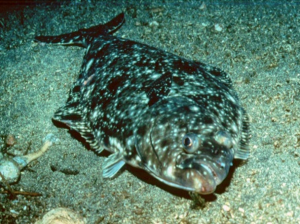
The primary aim of this longstanding collaboration with the International Pacific Halibut Commission (IPHC) was to detect evidence for population structure in this highly mobile species with a long larval dispersal phase. In an initial phase, we screened 16 microsatellites in samples from locations across the geographic range of halibut and found very little population differentiation. However, we discovered 3 loci that were strongly linked to sex (Galindo et al. 2011)! Our data suggested that females were the heterogametic sex, i.e. females carry the ‘odd’ sex chromosomes, not males (like the mammalian Y-chromosome). This was surprising because in Atlantic halibut (Hippoglossus hippoglossus), males are heterogametic (just as in mammals). Subsequent blind comparisons revealed that the genetic sex identification method was much more accurate than the statistical methods currently employed by the IPHC (Loher et al. 2015). We are currently developing a high-throughput SNP marker for mass sex identification in Pacific halibut catches.
However, we haven’t forgotten our original aim of testing for population structure in the species. In an Herculean effort, Heather Galindo screened 16 microsatellites from the first study, as well as 32 additional markers linked to expressed genes, in halibut from across the range, resulting in one of the largest microsatellite data sets in marine fishes. These data revealed very subtle, but significant, differentiation of halibut around Attu Island and Petrel Bank in the western Aleutians. The other samples were genetically homogeneous. These results suggest relatively small isolated populations in the western Aleutians, which may be sufficiently isolated to warrant independent management (Galindo, Drinan et al. 2016).
Researcher: Dan Drinan (previously Heather Galindo)
Collaborators: Tim Loher, Josep Planas (International Pacific Halibut Commission)
Funding: International Pacific Halibut Commission